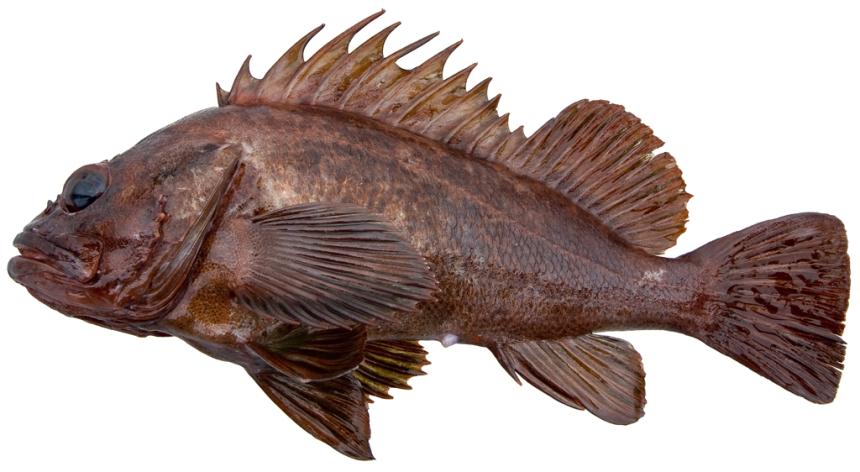Moderate-
High
Description and Range
Physical description
Brown Rockfish, as the name suggests, have a brown body with dark brown mottling. The caudal fin is truncated, and the head spines are pronounced. The most identifying feature of these fish is the dark brown spot located on the operculum.
Brown Rockfish are known to hybridize with Quillback and Copper Rockfish in Puget Sound. This hybridization can make identification difficult. The best way to identify a Brown Rockfish from the other two species is by the dark blotch on the operculum. This is often very noticeable when looking at the fish from the side and is absent on the other species. Take note that Coppers, Quillbacks, and other rockfish may have patches of mottling near the operculum but will rarely have such a distinct spot.
Browns can grow up to 56 cm (22 in) in length and 2.7 kg (5.9 lb) in weight, living for up to at least 34 years.
Geographic range
Brown Rockfish range from the Gulf of Alaska to central Baja California. They inhabit depths from the intertidal zone down to 287 m (941 ft). Browns tend to like habitat with rocky patches or hard substrata and can be found in areas ranging from low to high relief. Browns are also commonly found around artificial structures and marine debris such as piers, tires, and other anthropogenic objects. This species' coloration lends itself to more murky waters and is found in turbid waters more often than other rockfish species.
Climate vulnerability
Sensitivity to climate change
Moderate
The main sensitivity of brown rockfish to climate change is likely to stem from changes to their prey base. Warmer ocean conditions could lead to decreases in prey (e.g., zooplankton) for both juveniles and adults, prompting decreases in adult fecundity and juvenile survival. Additionally, nearshore habitat loss due to sea level rise could impact juvenile survival, as juveniles tend to use nearshore habitat as nursery and foraging area. Deepwater coral habitat, which many adult rockfish use, may also decrease due to acidification, further reducing available habitat. Decreased oxygen levels may have direct physiological effects on brown rockfish, leading to higher levels of mortality across various life stages. Due to their long life cycles and generation times, adults may be able to persist through short term pulses of negative ocean conditions (e.g., years with warmer sea surface temperature), though conversely, their low productivity could make it difficult for populations to recover from climate-related declines.
Exposure to climate change
Moderate-
High
- Increased ocean temperatures
- Sea level rise
- Declines in pH
- Decreased oxygen
Regulations
Rules and seasons
Recreational harvest within Puget Sound has been closed.
State record
- Weight
- 1.27 lbs
- Angler
- Richard Bethke
- Location
- Agate Pass, Kitsap County
- Date Caught
- July 21, 2003
